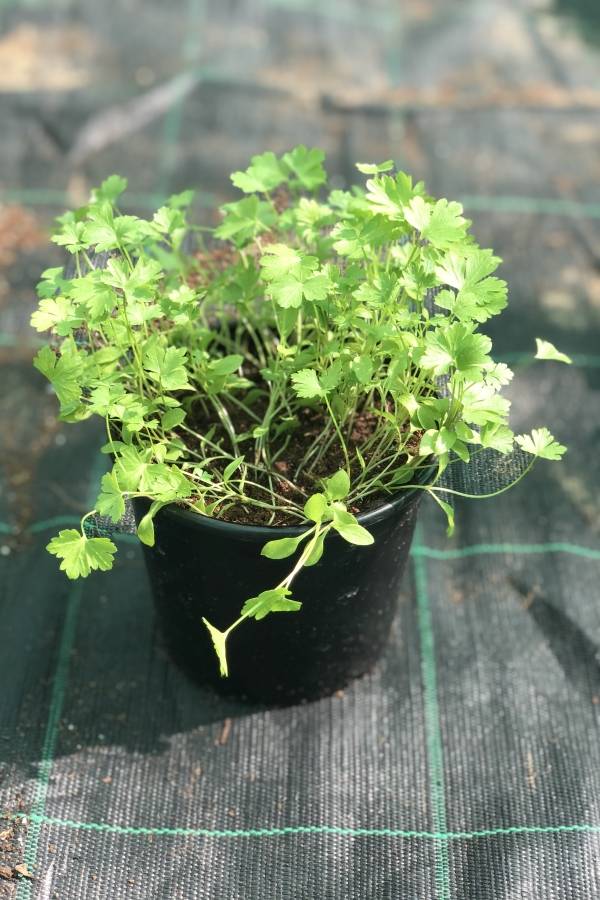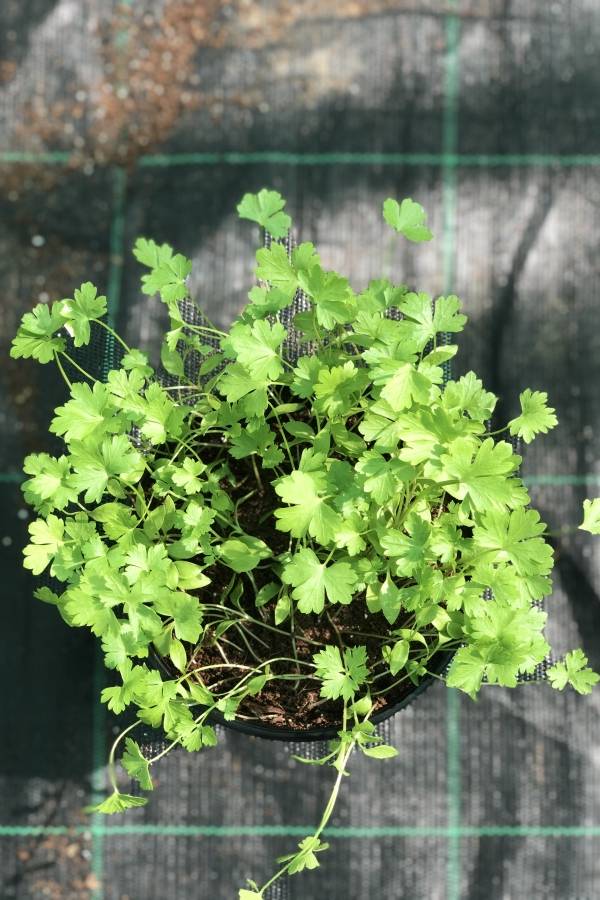Coriander | Plantshop.me
Dismiss



Parsley
SKU 4916
AED 9
Qty
Choose your delivery location
Plant Bio
Parsley (Petroselinum crispum) is a popular herb known for its vibrant green leaves and fresh, slightly peppery flavor. It belongs to the Apiaceae family and is commonly used in culinary applications to enhance the taste of various dishes. Here's a description and care guide for parsley:
Leaves: Parsley has bright green, deeply divided leaves that grow in a rosette form. The two most common types are curly leaf parsley (Petroselinum crispum var. crispum) and flat-leaf or Italian parsley (Petroselinum crispum var. neapolitanum). Curly leaf parsley has tightly curled leaves, while flat-leaf parsley has broader, smoother leaves.
Flowers: Parsley produces small, inconspicuous flowers in clusters. However, in culinary use, the leaves are the main focus, and the plant is typically harvested before it flowers to maintain optimal flavor.
Flavor: Parsley has a fresh, slightly peppery flavor that complements a variety of dishes. It is often used as a garnish, in salads, soups, stews, and as an ingredient in various recipes.
Care Guide:
Sunlight: Parsley prefers partial to full sunlight. While it can tolerate some shade, it performs best when grown in a location that receives at least 4-6 hours of direct sunlight per day.
Soil: Plant parsley in well-draining, fertile soil. It thrives in soil with a slightly acidic to neutral pH. Adding organic matter, such as compost, to the soil can enhance its fertility.
Watering: Keep the soil consistently moist but not waterlogged. Water parsley when the top inch of soil feels dry. Adequate moisture is essential for healthy growth.
Temperature: Parsley is a cool-season herb and prefers moderate temperatures. It can tolerate light frost but may struggle in extremely hot conditions. In hot climates, provide some shade during the hottest part of the day.
Fertilization: Use a balanced, all-purpose fertilizer to feed parsley every 4-6 weeks during the growing season. Avoid over-fertilizing, as this can lead to excessive leaf growth with diminished flavor.
Pruning/Harvesting: Regularly harvest parsley leaves to encourage bushier growth. Remove outer leaves first, and avoid taking more than one-third of the plant at a time. Pinch off flower buds if you want to prolong the harvesting period.
Pest Management: Parsley is relatively resistant to pests. However, keep an eye out for aphids, caterpillars, or whiteflies. Insecticidal soap or neem oil can be used to control pests.
Container Growing: Parsley can be grown in containers, making it suitable for balconies, patios, or indoor herb gardens. Ensure the container has drainage holes, and use a well-draining potting mix.
Companion Planting: Planting parsley near tomatoes, asparagus, or roses can have beneficial effects on those plants, making it a useful companion in the garden.
Propagation: Parsley can be propagated from seeds. Directly sow seeds in the garden or start them indoors and transplant the seedlings once they are well-established.
Parsley is a versatile and flavorful herb that is a wonderful addition to both the kitchen and the garden. With the right care, including proper sunlight, well-draining soil, regular watering, and harvesting, you can enjoy a steady supply of fresh parsley for your culinary creations.
Join Now to Receive Exclusive Deals!
"Sign up for our emails and get exclusive discounts on all your favorite plants and gardening products!"
Now we’re in this together.
Your welcome email is on the way!
You’ve subscribed to: Plantshop.ae Newsletter.
You can always manage your subscriptions through the “Unsubscribe” link at the foot of each Plantshop.ae newsletter.


Now we’re in this together.
Your welcome email is on the way!
You’ve subscribed to:
Plantshop.me Newsletter.
You can always manage your subscriptions through the “Unsubscribe” link at the footer of each Plantshop.me newsletter.





